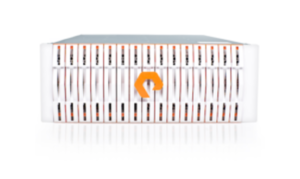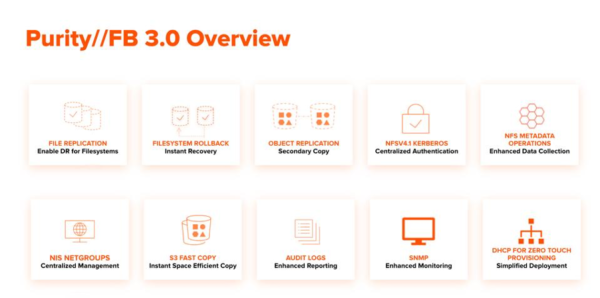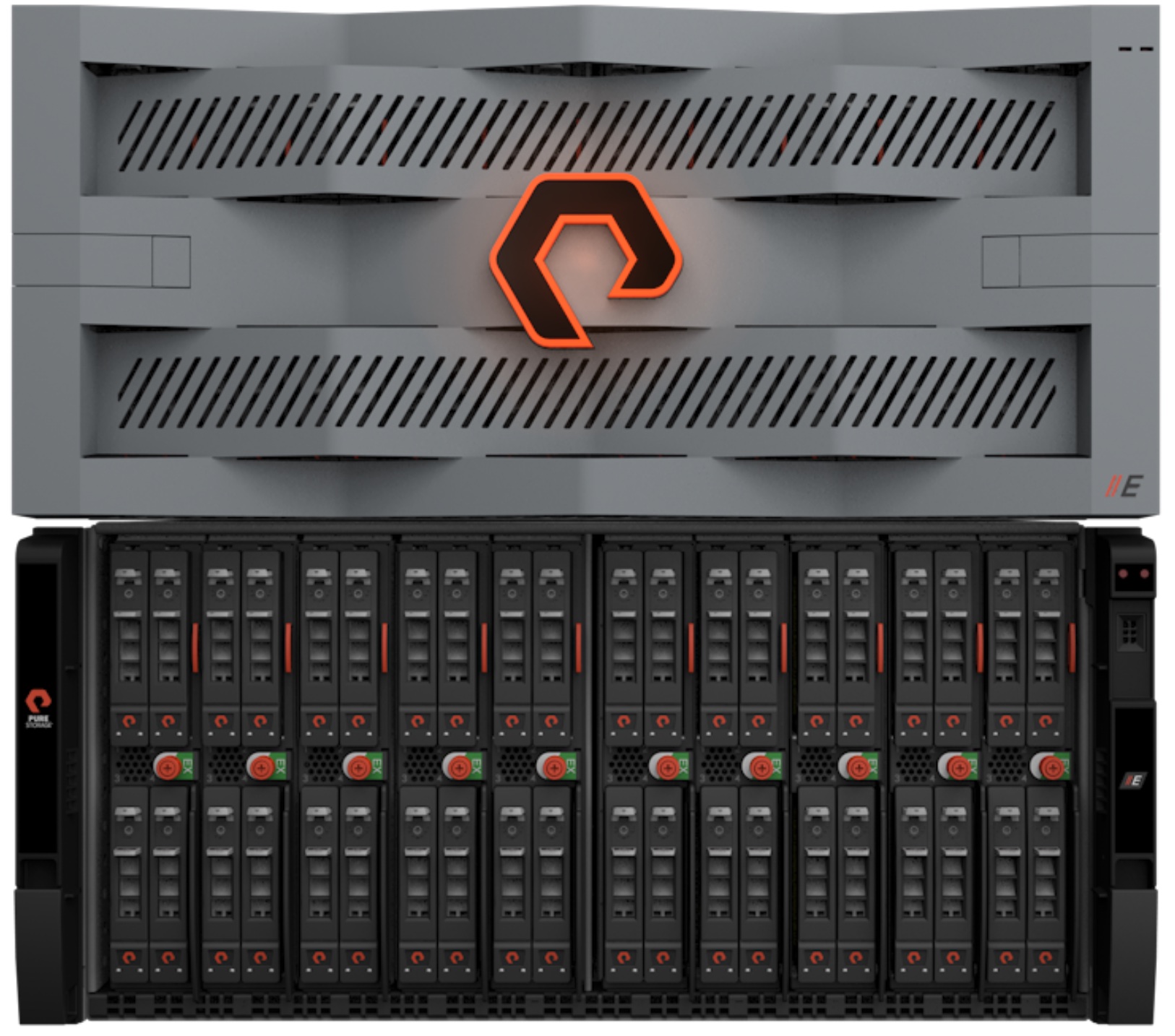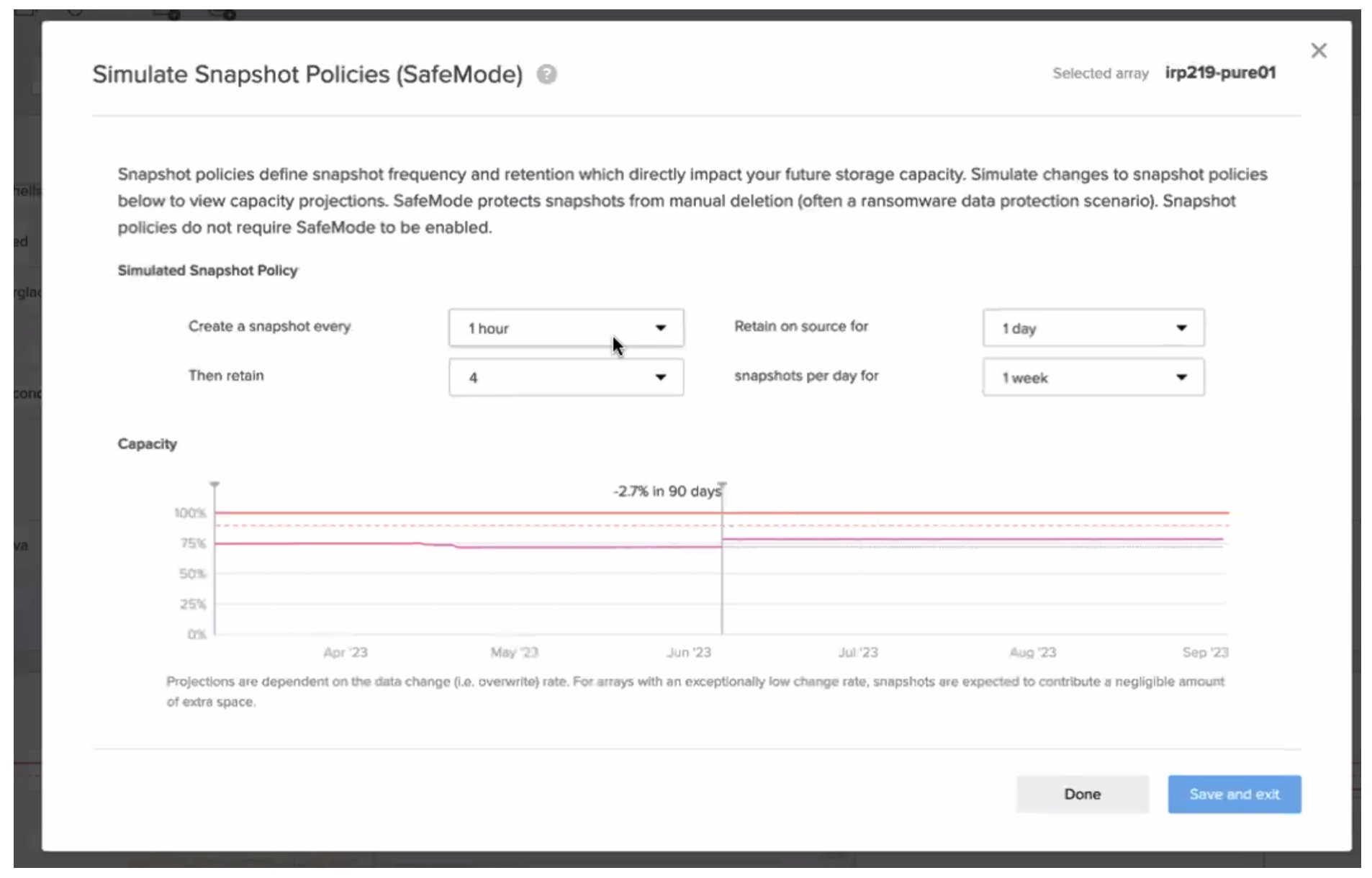Pure Storage recently released version 3.0 of Purity, the software stack that powers FlashBlade. The new features and functionality indicate that the platform is maturing. Read on to find out why.
What is FlashBlade?
FlashBlade is a Unified Fast File and Object storage platform for modern data and modern applications. Storage capacity and performance is delivered by flash-based NVMe, using PCIe for as the transport mechanism. Capacity and performance are added by plugging additional blades into the chassis, up to 150 from the starting point of 7.

In traditional arrays, data can only be read from one controller (or “blade” in Pure Storage’s terminology). With the FlashBlade’s distributed scale-out architecture, the load is spread across all blades in the cluster, maximizing performance. The scale-out metadata architecture handles tens of billions of files and objects with ease, an area traditional (block-based) controllers struggle with.
Use Cases
You’d imagine these immensely fast scale-out systems would be used for only the toughest use cases. And while FlashBlade is used for heavy use cases like AI/ML, Big Data and Analytics, they aren’t the only use cases. Pure is finding customers use FlashBlades as more traditional secondary storage as well, covering R&D, Test/Dev and data copy management (backup, DR) as well.
And while the scope of the secondary storage use cases is limiting to those with very limited recovery windows, it’s a solid investment of your business depends on it. Pure finds that protection against ransomware is one of those use cases warranting very fast recovery.
Purity//FB 3.0
Version 3.0 of the software powering the FlashBlade brings a couple of new features. Features that, at first glance, might not excite, and don’t even fit the bill given the use cases where FlashBlade is used. Major new capabilities include file and object replication and filesystem rollback.

But who needs replication if they’re using FlashBlade for Big Data or secondary (backup) data? Big data warehouses are notoriously difficult to move, and many of the data inertia challenges are better solved from within the application layer, not the storage layer.
So why introduce these features? Lifecycle management and making data available in the cloud only partly explain these features. It’s also a sign that the platform is maturing and gradually shifting towards more mainstream use cases.
These new features also add to the flexibility of the platform. The replication features can be used to copy data to AWS S3, making data sets available in the cloud for processing, or making data available to geographically dispersed users.
All in all, Pure Storage is helping operators manage the lifecycle of not just the data, but the storage platform itself, too. This allows more mainstream workloads that require high performance and low latency to run on FlashBlade systems as well.
Read the Purity 3.0 press release here.




